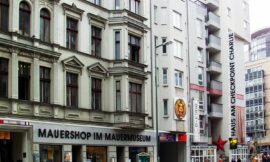The King’s Own Scottish Borderers (KOSB) Museum, located in Berwick-upon-Tweed, England, is a dedicated military museum that chronicles the illustrious history of one of Scotland’s most distinguished infantry regiments. The museum is housed within Berwick Barracks, a historic military installation designed by the renowned architect Nicholas Hawksmoor in the early 18th century. Through its extensive collection of artifacts, exhibits, and interactive displays, the museum provides a comprehensive look at the regiment’s role in various military conflicts and its contributions to British military history.
Historical Background of the Regiment
The King’s Own Scottish Borderers were established in 1689 in Edinburgh by David Leslie, 3rd Earl of Leven, to defend against the Jacobite uprising. Initially formed to protect the Scottish borders, the regiment quickly became integral to British military operations across the globe. The regiment’s motto, “Nemo Me Impune Lacessit” (No One Provokes Me with Impunity), underscores its fierce and resilient spirit.
The Museum’s Foundation and Location
The KOSB Museum was founded to preserve and share the rich heritage of the regiment. Berwick Barracks, an ideal location for the museum, was built between 1717 and 1721, and is one of the first purpose-built barracks in England. The historic setting adds an authentic atmosphere, enhancing the museum’s exhibits and the visitor experience.
Exhibits and Collections
The museum boasts a wide array of exhibits that span the regiment’s history from its inception to its amalgamation with the Royal Scots in 2006 to form the Royal Scots Borderers, a battalion of the Royal Regiment of Scotland. Key exhibits and collections include:
- Uniforms and Insignia: The museum displays a comprehensive collection of uniforms, badges, and insignia that have been worn by KOSB soldiers throughout its history. These artifacts illustrate the evolution of military attire and regimental identity.
- Weaponry and Equipment: Visitors can view an extensive range of weaponry and military equipment used by the regiment over the centuries, from muskets and swords to modern firearms and communication devices.
- Medals and Decorations: The museum’s collection includes numerous medals and decorations awarded to KOSB soldiers for bravery and service. These items tell personal stories of heroism and sacrifice.
- Regimental Silver and Memorabilia: The regimental silver collection features intricately designed pieces that reflect the regiment’s ceremonial traditions and heritage. Personal memorabilia, such as letters, diaries, and photographs, provide intimate insights into the lives of KOSB soldiers.
- Campaigns and Battles: Detailed exhibits cover the regiment’s participation in major conflicts, including the Napoleonic Wars, the Crimean War, both World Wars, and more recent engagements. These displays highlight the strategic importance and impact of the KOSB in these historical events.
Interactive Displays and Educational Programs
The museum incorporates interactive displays and multimedia presentations to engage visitors of all ages. These features include:
- Interactive Maps and Timelines: Digital maps and timelines allow visitors to explore the regiment’s movements and engagements across various campaigns, providing a dynamic and educational experience.
- Audio-Visual Presentations: The museum offers audio-visual presentations that recount significant battles and the personal stories of soldiers, bringing history to life through powerful narratives and visuals.
- Hands-On Activities: For younger visitors, the museum provides hands-on activities and educational workshops designed to teach about military life and the history of the KOSB in an engaging and accessible manner.
Special Exhibitions and Events
The KOSB Museum regularly hosts special exhibitions that delve into specific aspects of regimental history or commemorate significant anniversaries. These temporary exhibits often feature rare artifacts, personal stories, and detailed research, offering new perspectives on the regiment’s legacy.
The museum also organizes events such as lectures, book signings, and remembrance ceremonies. These events foster a deeper connection with the local community and promote an understanding of the regiment’s historical and cultural significance.
Preservation and Research
The museum is not only a public exhibit space but also a center for research and preservation. It maintains an archive of documents, photographs, and other materials related to the regiment’s history. Scholars, historians, and descendants of KOSB soldiers often utilize these resources for research and genealogical studies.
Conclusion
The King’s Own Scottish Borderers Museum in Berwick-upon-Tweed stands as a testament to the bravery, service, and sacrifice of the soldiers who served in this storied regiment. Through its carefully curated exhibits, interactive displays, and educational programs, the museum preserves the legacy of the KOSB while educating the public about the important role this regiment played in British military history. It is a must-visit destination for history enthusiasts, military buffs, and anyone interested in learning more about the rich tapestry of Scotland’s military heritage.



